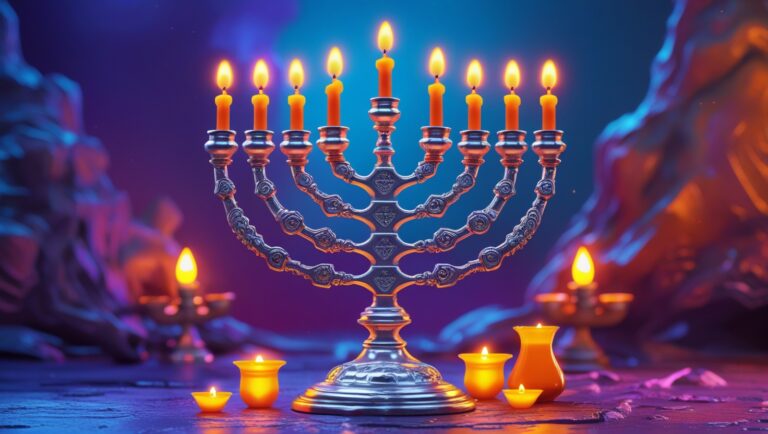The weeks of Shovavim present a golden opportunity for those who wish to rectify the stains of sins in the most complete fashion.
First, it’s important to know that there’s a difference between Teshuva (repentance) and Tikkun (rectification). A person may regret doing a certain sin, confess to Hashem, and resolve never to return to that state. Sometimes he may even be required to pass Yom Kippur to atone for it.
Done properly, this is called Teshuva, and is of incredible value in Hashem’s eyes.
However, Tikkun is when the person rectifies the negative effects of the sin on his soul and the spiritual realms and Sephirot. Generally, this is done through a series of fasts that are done in place of the korbanot (sacrifices) in the Holy Temple. Every sin, even from previous gilgulim (reincarnations) stacks up in the spiritual worlds, and it’s not farfetched to say that much of our suffering in this world is because of them.
Yes, this is true even if you are not guilty of ever doing them in this reincarnation. Even if you know you haven’t done it. It could that in a previous lifetime you were guilty of that and Teshuva, in this case, does not suffice. That’s why we are here again.
To summarize: imagine the son of the king breaks a valuable vase in the palace. Teshuva is confessing and telling the king you are sorry. Tikkun is buying a new one for him.
What is Shovavim?
Shovavim is the series of weeks that span the Parashiot of Shemot, Vayeira, Boh, Beshalach, Yitro and Mishpatim. During this period in which we read about the birth of the Jewish nation, we can rectify the most severe sins, especially those of a sexual nature. Some add the Parshiot of Terumah and Tetzaveh, but I’m not sure this tradition is from the Arizal.
Rabbi Chaim Vital writes that during the weeks of Shovavim one can rectify many of the sins from his current reincarnation as well as the previous ones. Many Mekubalim teach that ideally, one should go over all the fasts (and redeem them for money) for all the sins at least once in our current lifetime, since we don’t know which sins we did or didn’t do in the previous generations.
Many times, we are stuck in life in regards to Parnassah (sustenance), health, children, spouses and so on, and the reason may be because there’s a blemish in the spiritual realms preventing us from advancing and getting what we want.
In this case, there’s no such thing as an “online Tikkun”, meaning, we can’t assign someone else for this.
Let’s explore this concept better.
Understanding the Tikkun HaYesod during Shovavim
The concept of Tikkun HaYesod, or the Rectification of the [Sephirah of] Foundation, during the weeks of Shovavim in Kabbalistic tradition, is a very deep concept. In Kabbalah, the Sephirot are depicted as attributes through which the Ein Sof (the Infinite) reveals Himself and continuously creates both the physical and spiritual realms. This we saw in many previous articles.
Yesod, which means “foundation” in Hebrew, is the ninth of these ten Sephirot and plays a crucial role in the flow of divine energy. In the human body, the Yesod is the sexual organ that brings down the seed to the Malkhut (the woman). The seed is an incredibly holy form of energy that, if squandered, gives tremendous power to the Sitra Achra besides breaking a fair deal of the Sephirot and bringing them down.
Scarcely anyone is free from blemishes in this area, even great Tzaddikim, although they certainly spend their lives rectifying it to cleanse it completely. To a great extent, this is what brings them to their exalted level.
In the Kabbalistic Tree of Life, the Sephirah of Yesod sits above Malkhut (Kingdom), the final and lowest of the Sefirot. It acts as a channel through which the upper Sephirot transmit their divine flow to Malkhut. Yesod is associated with righteousness and purity, and Yosef HaTzaddik, who resisted temptation and maintained his integrity against Potifar’s wife, is the paradigm of purity of Yesod, whose soul is rooted in it.
In the context of Shovavim, which delves into the Yetziat Mitzraim (exodus) narrative, the concept of Yesod connects to the idea of emerging from a state of confinement (represented by Egypt) into a state of spiritual freedom and purity, when we can finally receive the Torah. This mirrors the journey of the soul as it seeks to free itself from the constraints of physical desires and lower inclinations, embodying the purity and righteousness of Yesod.
In other words: we are recreating our soul, much like the Jewish People were re-created during Egypt. In Sefer HaLikutim, the Arizal likens the descent of the Jews to Egypt as a period of gestation. The names of the chiefs of families are the powers of the soul that an embryo receives. Almost immediately after leaving Egypt, we had the splitting of the Red Sea, which symbolizes the “breaking of the water” (i.e. amniotic sac), after which the baby leaves.
This period of Shovavim is seen as a time to introspect and correct personal failings, particularly those relating to sexual conduct and relationships, as these are directly connected to the Sephirah of Yesod. In Kabbalah, the physical and spiritual worlds are deeply interconnected. Tikkun HaYesod during Shovavim is not just a personal endeavor but can rectify blemishes from the previous gilgulim (reincarnations).
By rectifying Yesod, one not only elevates their personal spiritual state but also contributes to the harmonious flow of divine energy throughout the entire structure of Sephirot, thereby bringing healing and balance to the world.
But, particularly, one’s own life.
How to rectify the sins in Shovavim
Each sin that a person does requires a different amount of fasts to atone. However, as one can see from the table below, they are not feasible even for many Tzaddikim.
That’s why many Kabbalists, including the Ben Ish Chai, have established a specific amount of money to redeem the fasts. In this case, one then fasts from sunrise to nightfall (not too bad), and redeems the fasts according to how much he’s able to give. Generally, the amount per fast is the amount of money one consumes per meal.
So, for example, in the table above, one who broke a Neder (6 fasts) has to pay 6 times the amount of money a regular meal costs – say 10 dollars – which would equal about 60 dollars. Once the fast and the Pidyon (redemption) are done, you are free from all the blemishes of that specific sin.
For someone who’s in a difficult financial situation, the minimum is a poor man’s meal, which would be something like an apple and a piece of bread per fast.
The main part of the Tikkun is during Mincha. In Kabbalistic Yeshivot like Nahar Shalom, the Gabbai brings a bowl for people to put the money in. The tefilah is prayed with the Anenu HaGadol from Rabbi Shalom Sharabi (the Rashash), which takes longer considering all the Kavanot. This is why they tend to divide all the Tikkunim in the table above between different days.
Those who don’t know the Kavanot can – and are very much welcome to – participate in the Tikkun Shovavim, and the Chazan, a Mekaven, is yotzeh (fulfills the obligation for) everyone. The Tefila is long (about 1 hour or more), but is very powerful and does wonders to change one’s Mazal.
Hashem never rejects a sincere person who comes to repent, so even those who don’t know what is going on should go and do the Tikkun if they can.
Teshuva, Shovavim and Reincarnation
Let’s learn a key insight into Teshuva, as illuminated by the teachings of the Arizal. Teshuva is introspectively understood as ‘tashuv-heh’ (ה), signifying the “return of the [letter] ‘heh'”.
But what does this return entail?
In the divine name Yud-Kei-Vav-Kei (יהוה), the final ‘Heh’ symbolizes the Shechinah in exile due to our transgressions. The departure of the Shechinah, our spiritual mother, is a consequence of our misdeeds.
During teshuvah, our focus is ‘Tashuv Heh’ – the return of the Shechinah to its rightful place. This is the essence of tikkunim. The Shechinah represents our own soul. When we sin, the light within our soul dims, and negative forces vie to seize it, much like ravenous dogs lunging for a morsel.
However, through Teshuvah, Hashem reclaims those scattered sparks of light, reuniting them with our sanctified soul. With Hashem’s guidance, we’ll delve deeper into these concepts. Now, let’s progress further into the insights of the Zohar.
As we spoke before many times, reincarnation is a natural, built-in aspect of Creation. We are all reincarnations from previous generations.
No one likes to fast (myself included), but considering how much pain and suffering we are freeing ourselves from in the spiritual realms after we pass away, it’s a very cheap price.
Who’d want to go back to this physical world with all its suffering only because we didn’t rectify ONE sin?
It’s worth remembering that reincarnation may not happen immediately but can take 20, 100 or even 1.000 years so Hashem “finds” a suitable body for our souls to descent, which needs to be from the same soul root and eventually engage in the Tikkun we need, so it’s better not to risk it and do our best.
May we all merit to do all our Tikkunim with flying colors, with Hashem’s help.







